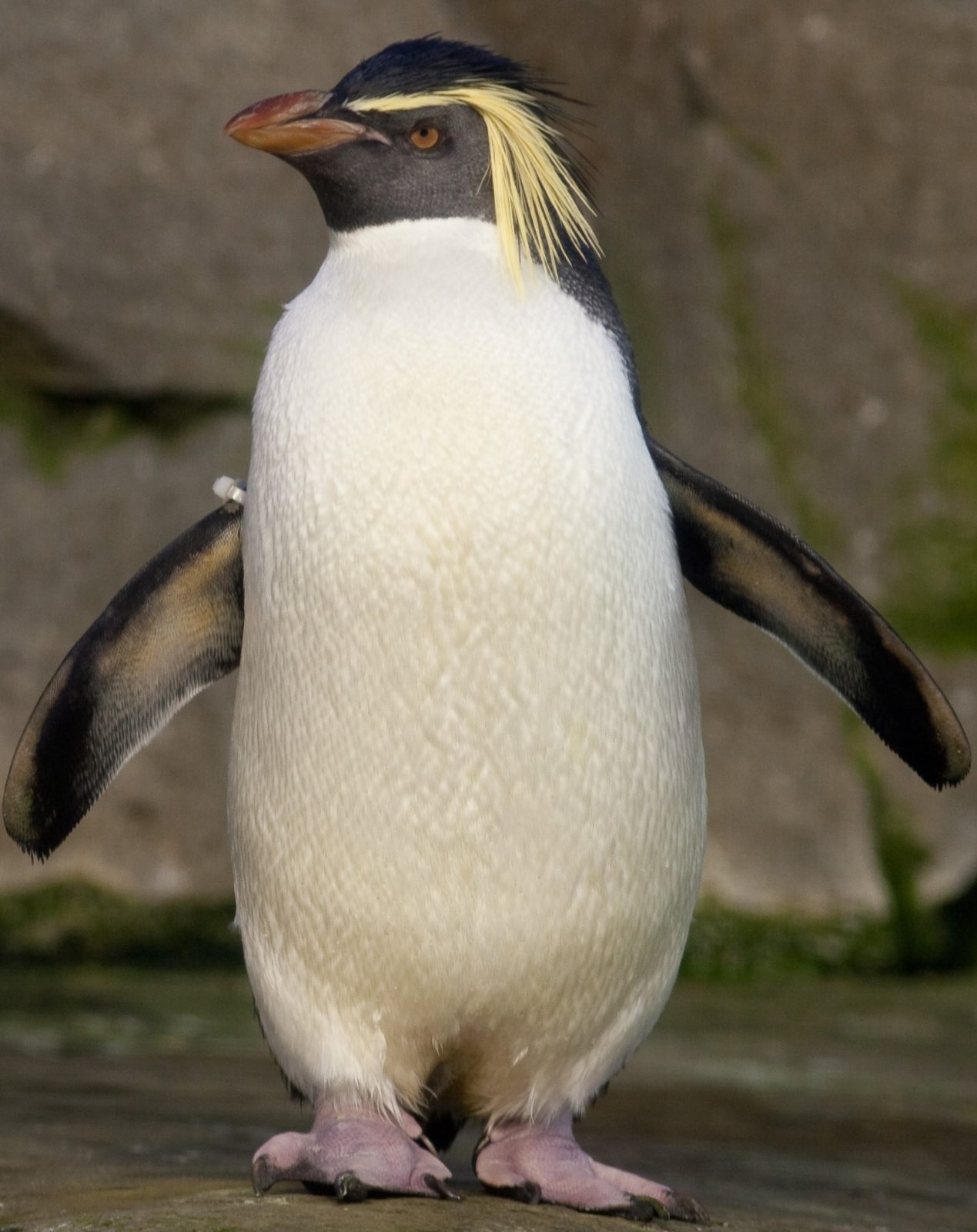
Northern Rockhopper penguin
 Found in the Southern Indian and Atlantic ocean, the Northern rockhopper penguin is a separate subspecies to the southern rockhopper penguin subspecies, but they do not interbreed. The northern rockhopper penguin population has declined by 90% since the 1950s, so they are considered endangered. The northern rockhopper penguin feeds largely on krill alongside lesser amounts of crustaceans, squid, octopus and fish.
Found in the Southern Indian and Atlantic ocean, the Northern rockhopper penguin is a separate subspecies to the southern rockhopper penguin subspecies, but they do not interbreed. The northern rockhopper penguin population has declined by 90% since the 1950s, so they are considered endangered. The northern rockhopper penguin feeds largely on krill alongside lesser amounts of crustaceans, squid, octopus and fish.
More than 99% of northern rockhoppers breed during late spring or early summer on Tristan da Cunha and Gough Island in the south Atlantic Ocean. What remains breed on the French Southern and Antarctic Lands of Amsterdam Island and St Paul Island.
It is very rare for the bird to make landfall on the Australian continent, but in 2006, a northern rockhopper was sighted at Robe, South Australia, and in July 2023 a very underweight northern rockhopper was found at Goolwa beach in South Australia.
The current population is estimated to be between 100,000–499,999 breeding pairs at Gough Island, 18,000 to 27,000 pairs at Inaccessible Island, and 3,200 to 4,500 at Tristan da Cunha. In the Indian Ocean, the population was 25,500 pairs on Amsterdam Island, and 9,000 pairs on St Paul Island in 1993; there has been no information available on population trends there since the 1990s.
Declines at the Atlantic Ocean sites show a decline of 2.7% per year; the drop in the population at Gough Island has been described as equivalent to the loss of 100 birds every day since the 1950s. As one could imagine, it is impossible for this to continue, without eventually reaching a point where they are no longer viable.
It is classed as endangered.
Below is a video from the royal zoological society of Scotland, talking about conservation of this subspecies of penguin. Below that is a list of any posts on this species.
Under this we will add links to help you see this species in the wild. Whether, this would be the sole purpose of your trip, or a wild section on a bigger trip, we want to be able to help you connect with locals who want to show you these fascinating creatures. If you work in conservation or tourism for this species, click here . We are eager to help people find you. We are also eager to be able to feature articles and similar from you and researchers on the same subject, so that you can engage with future people who might come to see your wildlife in a natural way.